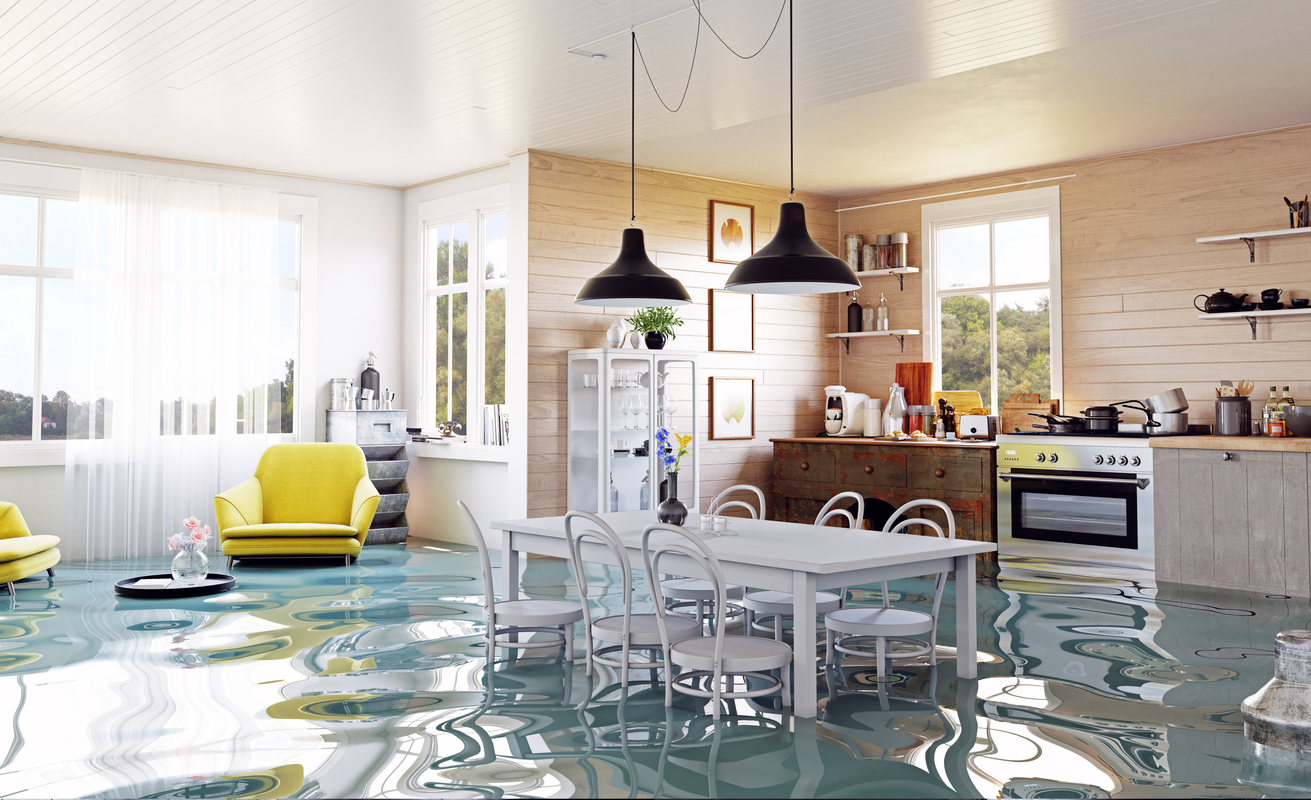Note: This guest post is by David A. Thompson, CPCU, AAI, API, CRIS.
Did you know that flooding, not hurricanes, is the most frequent and costly natural disaster? One report stated that almost 90 percent of natural disasters involve flooding, and since 2000 flooding has cost U.S. taxpayers $850 billion. A vast majority of flood events are uninsured. Over 75 percent of flood damage from Hurricanes Irma and Harvey in 2017 was uninsured. Hurricane Ian in 2022 came ashore in the Lee County (Ft. Myers) area. Data supplied by FEMA showed that only 30 percent of the properties in that county had flood insurance, and amazingly only 50.4 percent of structures in high risk flood zones were protected by flood insurance through the National Flood Insurance Program (NFIP).
If a structure is secured by a federal lender in a high-risk zone, flood insurance is required as a condition of the loan. This means that owners of those high-risk structures had no mortgage and elected not to purchase flood insurance. Just six weeks after Hurricane Ian made landfall, FEMA had received over 43,000 claims. Their data showed that throughout the path of Hurricane Ian in Florida, only about 20 percent of the flooded structures were protected by flood insurance. In central Florida, over 70 miles from the coast, rainfall exceeding 15 inches caused extensive flooding.
Flooding comes from a variety of sources, and it is not limited just to those living in coastal areas. Over the past few years, there have been severe flood losses in Tennessee, Oregon, West Virginia, and Las Vegas. In Death Valley, California, in 2022, just 1.7 inches of rain in a three-hour period caused massive damage to one of the driest places on earth; dozens of cars sat in about three feet of mud. Flooding occurs from storm surges in hurricanes, overflowing rivers, and very commonly in Florida (as well as throughout the country) from the rapid accumulation of water from a thunderstorm. Some areas are known to flood after what seems to be just a little bit of rain.
A vast majority of communities in the U.S. participate in the NFIP. Every structure sits in a flood zone, it’s just a matter of what the specific zone is. High-risk zones start with the letters A or V, while low-to-moderate risk zones include zones B, C, and X. Too many consumers think, “I am not in a flood zone,” but they are. The confusion likely comes from the requirement that any structure that sits in a high-risk zone must be protected by flood insurance if there is a lender involved. Confusing “required to have flood insurance” with “should have flood insurance” is common. Remember, too, that FEMA data has shown for decades that about 25 percent of all dollars paid under the NFIP go to those structures in zones B, C, and X … where lenders normally do not require flood insurance.
After almost every major flooding event, there are always news stories of consumers standing in knee-deep water saying, “I thought my homeowners policy covered flooding.” In general, homeowners insurance policies and commercial property insurance policies do not cover losses caused by flooding. That is particularly troublesome with events like Hurricane Ian, which caused damage from both wind and flood. Without flood insurance in place, consumers are often left trying to convince a homeowners insurance company to cover losses caused by flood…a difficult debate to be involved in (and usually unsuccessful). Carrying both property and flood insurance policies puts the consumer in the best position.
The NFIP provides about 85 percent of the flood insurance in the U.S. The maximum limits available have not changed since 1994, with those limits being $250,000 of building coverage on one-to-four family dwellings and $100,000 of contents coverage available, and $500,000 of coverage available for commercial buildings (such as offices and restaurants) and $500,000 of contents coverage available. FEMA data shows that over one-third of all policies are written at maximum limits, with that figure being even higher in coastal states and high-net-worth areas. That means that excess flood insurance above the NFIP limits is often needed. Premiums vary based on the specifics of the building, but rating factors include the amount of coverage, type of structure, elevation above ground level, and proximity to any flooding source. At times, the cost can be measured as “just a few dollars per day…less than many people spend each day at their favorite coffee shop!”
Some private insurance companies (Not the NFIP) write flood insurance in certain areas of the country. In general, these policies provide coverage that is better than NFIP through higher coverage limits, better coverage, and at times a lower price. Whether the NFIP or a private insurer is a better option takes a discussion with a qualified insurance agent.
The Takeaways:
- Flooding causes billions of dollars of damage each year.
- Too many consumers don’t purchase flood insurance, resulting in significant out-of-pocket costs.
- The cost of flood insurance is, at times, inexpensive.
- Everyone is in a flood zone.




